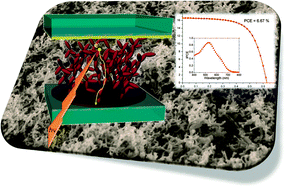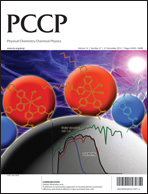Sponge-like nanostructured ZnO layers were successfully employed as photoanodes for the fabrication of highly efficient dye-sensitized solar cells. The sponge-like ZnO layers were obtained by room temperature radio-frequency magnetron sputtering deposition of metallic zinc, followed by thermal oxidation treatment in an ambient atmosphere. The porous films show a 3D branched nanomorphology, with a feature similar to natural coral. The morphological and optical properties of these layers were studied through field emission scanning electron microscopy, specific surface area measurements, ultraviolet–visible transmittance and absorption spectroscopy. The sponge-like ZnO film presents a high density of branches, with a relatively high specific surface area value, and fine optical transmittance. The morphology of the porous structure provides a high number of adsorption sites for the anchoring of sensitizer molecules, making it suitable for the fabrication of ZnO-based photoanodes for dye-sensitized solar cells. The light harvesting performance of the sensitized semiconductor was evaluated by current density vs. voltage measurements, incident photon-to-electron conversion efficiency, open circuit voltage decay and impedance spectroscopy. The modelling of the electrical characteristics evidences a higher electron lifetime and a longer charge diffusion length, if compared to standard TiO2 nanoparticle based photoanodes. For ZnO films with a thickness up to 18 μm, a photoconversion efficiency as high as 6.67% and a maximum value of the incident photon-to-electron collection efficiency equal to 87% at 530 nm were demonstrated.

You have access to this article
 Please wait while we load your content...
Something went wrong. Try again?
Please wait while we load your content...
Something went wrong. Try again?


 Please wait while we load your content...
Please wait while we load your content...